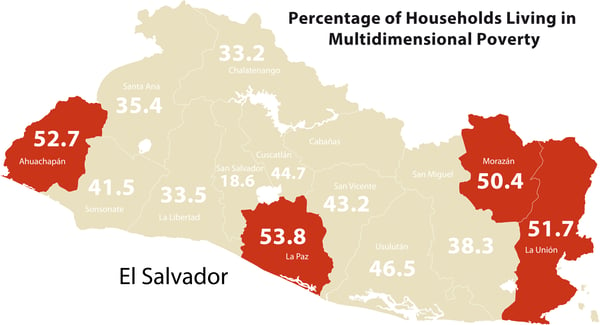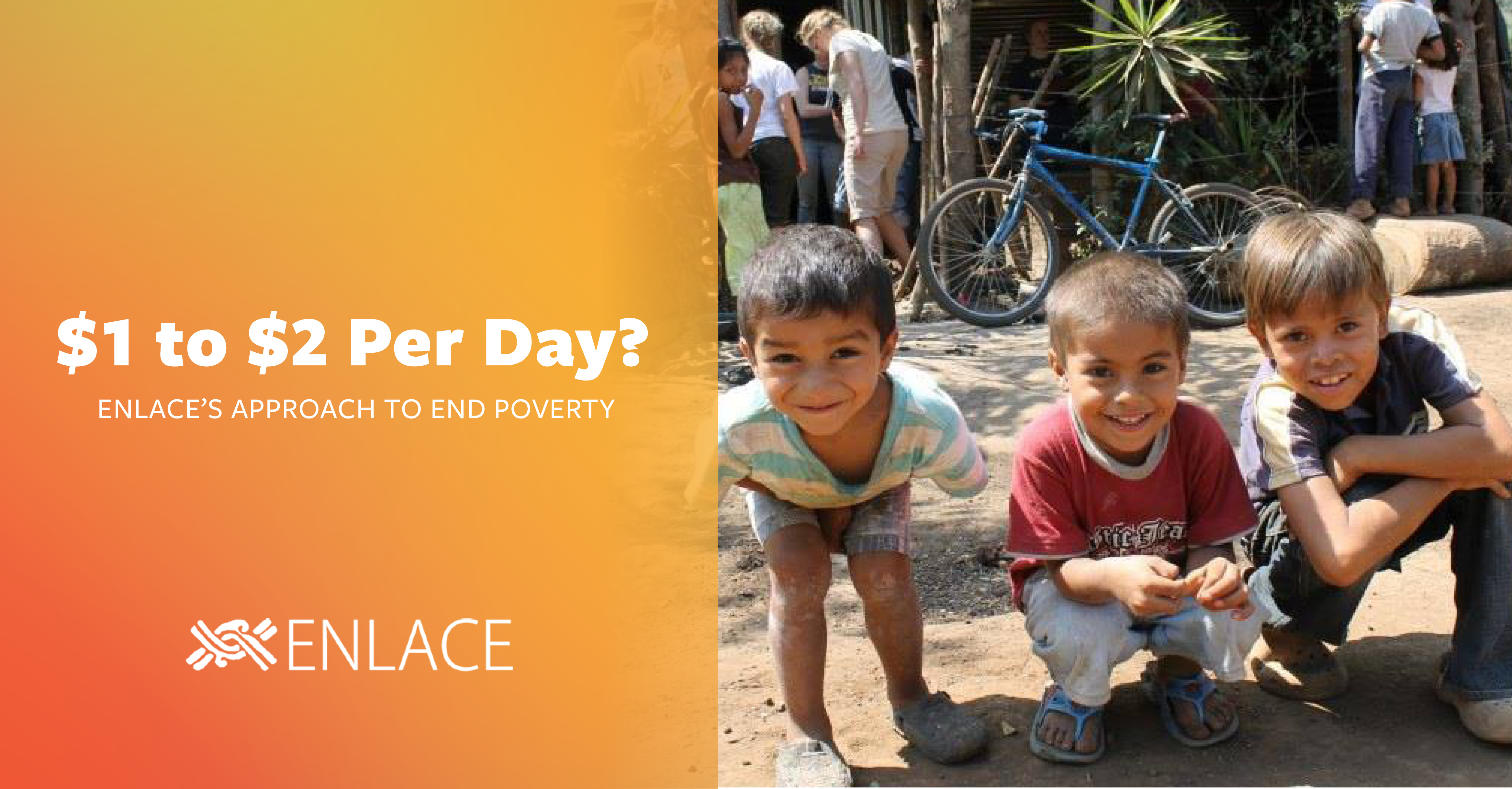ENLACE’s mission is to equip local churches to transform their impoverished communities.
One of the most challenging parts of this mission has been to define what it means to transform a community. Over the last 25 years, we have worked to understand the conditions and characteristics of poverty and therefore what transformation would look like for community members.
Although researchers have tried many ways to define poverty, such as by the amount of income per capita per day (i.e. $1 or $2 per person per day), most people experience poverty as a series of interrelated challenges that shape their understanding of themselves and the community. Many Individuals and families experience poverty as a series of deprivations simultaneously. These deprivations may include poor health and malnutrition, a lack of clean water and/or electricity, substandard housing or homelessness, underemployment, a lack of access to education and consistent health care.
Learning how these factors are interconnected provides a better understanding of how families experience poverty. It also is vital for families and communities themselves to understand the multiple dimensions of poverty in order to develop a sequence of integrated solutions to transform their communities.
Click here to see what poverty looks like family to family across the globe.
Multidimensional Poverty in El Salvador
According to a 2015 Digestic report, 35.2% (approximately 2.6 million people) live in households that experience multidimensional poverty. Researchers have worked with families to identify five primary areas of challenges which include: 1) education, 2) housing, 3) health and food security, 4) employment and 5) security and safety. For each of these challenges, they have created four indicators of equal weight in order to measure the index of poverty in each community. Families are considered to live in multidimensional poverty if they are experiencing more than nine of the 20 indicators simultaneously.
In El Salvador, families living in multidimensional poverty experience severe disadvantages in the following areas:
- low levels of schooling among adults (97.7%)
- insecurity and risk of violence (90.8%)
- under or unstable employment (84.4%)
- lack of appropriate sanitation services (83.7%)
- lack of adequate space in the home (79.6%)
- lack adequate walls and floors (51.9%)
- lack of clean water (49%)
Families also experience different levels of multidimensional poverty according to where they live. In rural areas, 58.5% of families live in multidimensional poverty in contrast to only 22.5% in urban areas. There are also four departments where more than half of the households live in poverty which are La Paz (53.8 %), Ahuachapán (52.7 %), La Unión (51.7 %) y Morazán (50.4 %). ENLACE is strategically located in these regions working with multiple church and community leaders.
 Half of the households that live in severe multidimensional poverty reside in four departments: La Paz, Ahuachapan, La Unión, and Morazán. ENLACE is strategically located in these regions working with multiple church and community leaders.
Half of the households that live in severe multidimensional poverty reside in four departments: La Paz, Ahuachapan, La Unión, and Morazán. ENLACE is strategically located in these regions working with multiple church and community leaders.
Click here to see how Salvadoran families actually experience multidimensional poverty.
Red to Yellow: How ENLACE is Measuring Community Transformation
The ENLACE team has worked for many years to develop an instrument to understand how the church and community members experience poverty but also to provide a tool for them to identify and implement projects that will address the underlying challenges of multidimensional poverty in their community. That dream has become a reality.
Over the last seven years, the ENLACE team has developed a baseline survey based upon the multidimensional approach that allows church and community leaders to identify the most pressing challenges in their communities. This instrument allows church and community members to identify which of the 20 different challenges affect their communities in El Salvador. The instrument also allows them to see how many households are affected by that challenge in their particular community.
If more than 66% of the households suffer from that particular challenge, then the areas are identified in RED. Whereas, if less than 66% but more than 33% suffer from the challenge, then it is colored ORANGE. If it is less than 33% and more than 1%, then it is identified in YELLOW. The visualization of the different colors allows the church and communities to develop a series of projects that address both the particular challenges people are facing and the specific households in greatest need.
Our dream is that over the next five years, we will see the poverty maps go from RED to YELLOW in every community that these churches serve.
Going from red to yellow will bring about something else that is incredible. In the next five years, the goal is to reduce the index of multidimensional poverty (the level of incidence and intensity of challenge in the community) in the communities we work in from an average of .350 (which is 2.5 times the national average of .142) to under .125!
Seeing lives changed--ending of poverty for hundreds of thousands of people--is an ENORMOUS goal. But we believe that it is within our reach!
We hope you will continue to be a part of this COLORFUL CHANGE!
Donate Now to ENLACE’s Multidimensional Poverty-Ending Projects and contact us to learn how you can help fuel our RED TO YELLOW mission!





